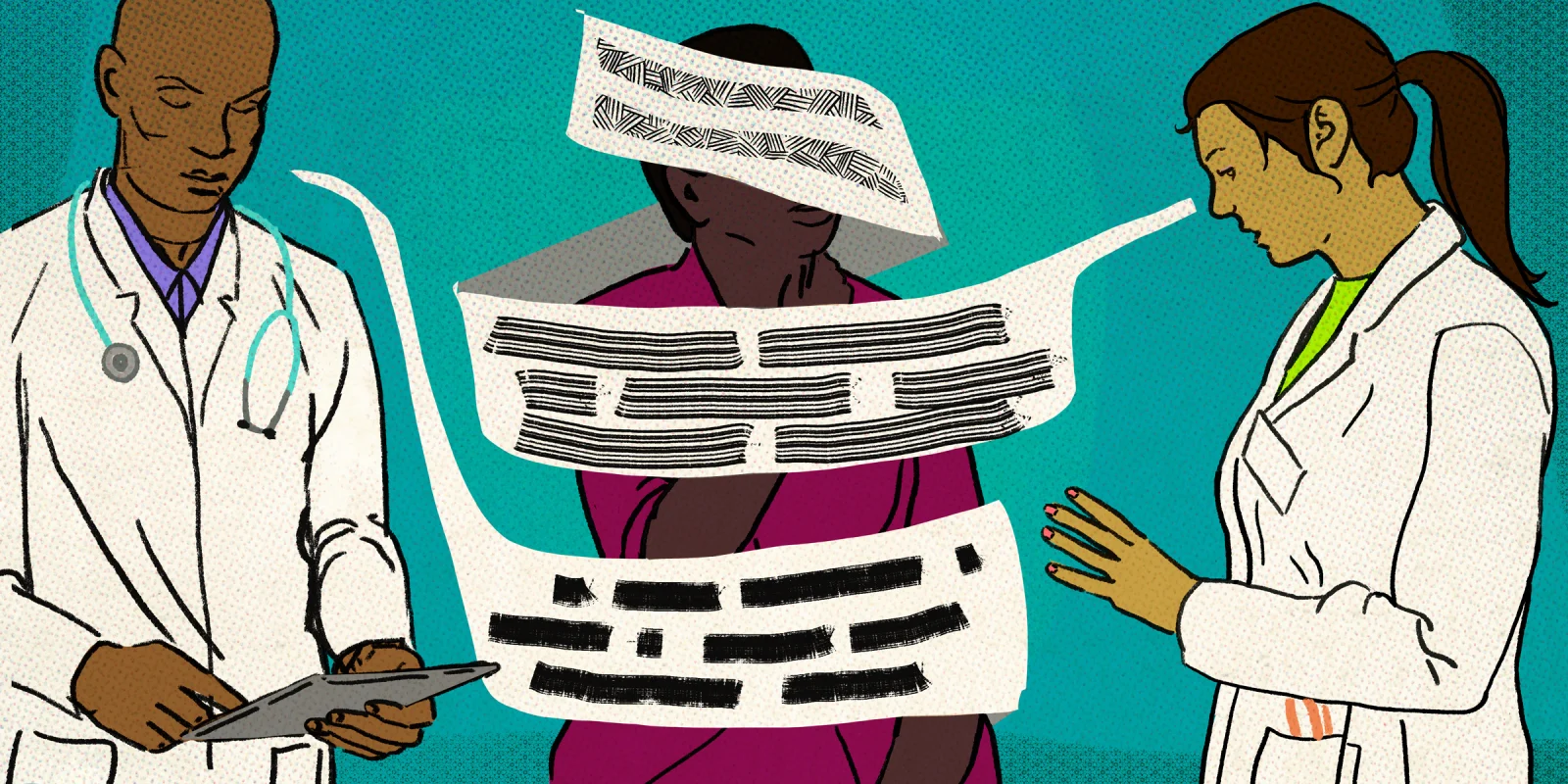On the overnight team, I was paged about a patient who was transferring out of the critical care unit to the floor. I opened his chart and a picture popped up showing a middle-aged Black man smiling in his gown. The attending attestation to the H&P read:
This is a Spanish-speaking gentleman with kidney failure on dialysis, heart failure, and AFib who came in with a heart attack caused by a clot after missing three days of taking his blood thinners. I think he needs to crawl before he can walk. He was turned down for a renal transplant related to cocaine use, though he “says” he has changed. He is very articulate. I worry about medication noncompliance. If he continues to behave, we could consider a surgical approach.
Appalled but not surprised by the assessment, I scrolled through the rest of the note. His social history read:
Immigrated from the Dominican Republic in 2013. Unstably housed, currently staying on his sister’s couch. No tobacco or alcohol use. Uses marijuana, positive urine toxicology screen for cocaine once in the past.
All clinicians are vulnerable to the biases of others’ documentation — and may be guilty of perpetuating bias themselves. According to the National Equity Project’s “Lens of Systemic Oppression,” there are multiple levels of bias, including personal, interpersonal, institutional (i.e., within an organization or sector), and structural (i.e., across organizations), that perpetuate oppression. Even in a one-liner that describes a patient, bias can be perpetuated through System 1 thinking, which is fast, automatic, and unconscious, compared to System 2 thinking, which is slow and deliberate. Numerous studies have demonstrated that the way things are documented in the medical record can lead to biased care. For example, notes written about Black patients are more likely to contain words or phrases consistent with testimonial injustice, which occurs when pre-existing bias causes a listener to give less credibility to a speaker’s words, essentially discrediting them based on an aspect of their identity.
Analyzing the attending’s attestation, I could see layers of personal and institutional bias aligned against the patient, who held intersectional identities (i.e., Black, limited English proficiency, immigrant, unstably housed, history of substance use) that put him at risk for receiving substandard care. The attending’s statement — “I worry about medication noncompliance” — placed blame on the patient resulting in a “nonadherent” label that was then applied to the patient’s missing three days of taking his blood thinners. The label, and the chart history of cocaine use, led the cardiac surgeon to hesitate on recommending the standard of care: valve replacement surgery. It also precluded him from a renal transplant evaluation. Additionally, the use of quotation marks around the word “says,” as well as infantilizing statements like, “crawl before he can walk,” “continues to behave,” and “articulate,” created a presumption of disbelief and further contributed to testimonial injustice.
Recognizing document bias is only the first step. Once we see it, how do we prevent it from occurring and mitigate its effects? There are a number of practices that clinicians can implement to improve care for patients vulnerable to chart bias:
- Directly discuss how language in the chart can perpetuate bias with the patient’s care team.
- Foster an environment in which biases can be discussed in real time. For example, at the end of rounds for each patient, ask the team: “Is there concern for bias or discrimination in this patient’s care?”
- Utilize perspective-taking and narrative medicine to humanize the patient in front of you. Perspective-taking is an evidence-based practice from psychology that is designed to build empathy for people who may have a different perspective from your own. Imagine that you can’t understand the words being spoken around you, and you just had a near-death experience. How do you feel? What thoughts are running through your head?
- Avoid stigmatizing and dehumanizing language: “Alcohol use” instead of “Alcohol abuse”; “states” instead of “claims,” “insists,” or “denies”; “patient with sickle cell” instead of “sickler.”
- Normalize adding problems into your assessment and plan, such as #Concern for Implicit Bias, #Concern for Racism, #Social Determinants of Health, and #Limited English Proficiency.
After taking a more detailed history, the team learned that the patient had missed taking his blood thinner for three days because he had run out on a Friday and his pharmacy was closed on weekends. With the assistance of a Spanish interpreter, our team discovered that no one had ever explained the patient’s cardiac comorbidities to him, and he had felt like he’d been excluded in some of the conversations about his care. (Notably, language-based inequities are pervasive in the medical system. Patients with limited English proficiency experience worse outcomes and often receive lower quality of care). Additionally, we learned from the patient that the single cocaine-positive urine toxicology was from marijuana that had been laced. Thankfully, his primary inpatient team advocated on his behalf using the strategies listed above, and the patient received the standard-of-care valve replacements. He is also currently being re-evaluated for a kidney transplant, which was delayed by almost a decade due to his chart diagnosis of cocaine use. We ended up holding an interdisciplinary health equity-focused M&M conference on the case to discuss how stigma and bias played an inordinately large role in the patient’s care. M&M conferences should all apply the lens of systemic oppression to clinical cases in order to analyze how bias, stigma, and discrimination can negatively impact patient care.
After taking care of my patient with kidney failure, I am now even more aware of the possibility and the repercussions associated with making stigmatizing assessments of marginalized patients. We can all do better in advocating for and implementing the above strategies to improve care for all patients.
Have you ever cared for a patient who had been negatively impacted by chart bias? Share what happened — and what you did to correct the problem — in the comments.
Sunny Kung is an addiction medicine fellow at Massachusetts General Hospital. She completed her internal medicine residency at Brigham and Women's Hospital and medical school at the Pritzker School of Medicine University of Chicago. Originally from California, she is a Taiwanese first-generation immigrant interested in caring for minoritized populations, immigrants, patients with substance use disorders, and those experiencing homelessness. Sunny is a 2021–2022 Doximity Op-Med Fellow.
Illustration by Jennifer Bogartz







